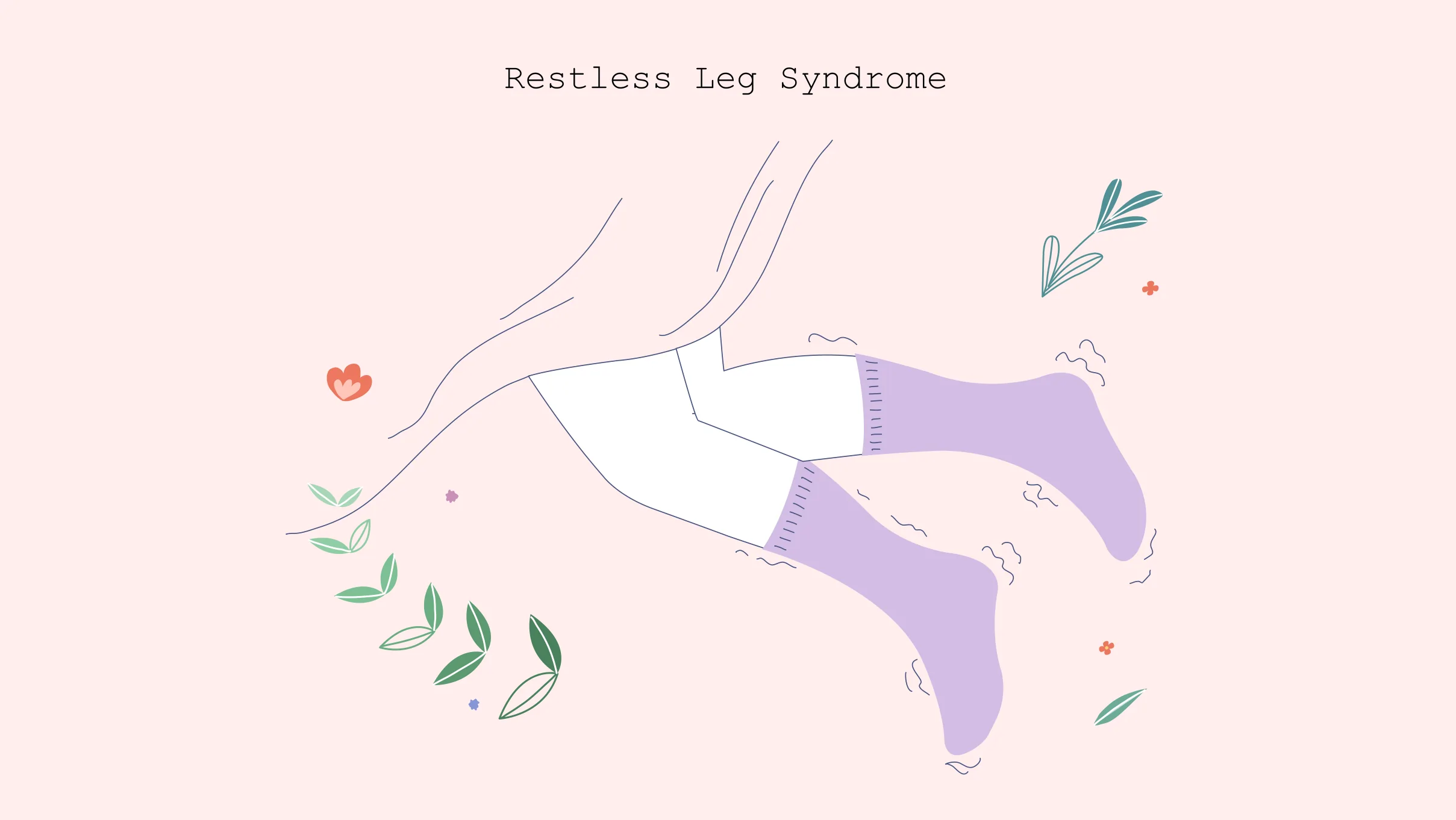Restless Legs Syndrome (RLS): Causes, Symptoms, Diagnosis
Written by


Also known as Willis-Ekbom disease, restless leg syndrome (RLS) is when you experience an intense sensation of moving your legs due to an uncomfortable feeling. It usually occurs in the evening or night when you relax or lie down. To combat the overpowering urge, moving around always helps. RLS can start at any age but tends to deteriorate as you grow older. It can also be one of the main reasons for disturbed sleep. Here, we bring you all the details about restless leg syndrome, including causes, syndrome, and more. Read on!
What Is Restless Legs Syndrome?
What is restless leg syndrome? It is a nervous system disorder that causes an uncontrollable need to move your legs. It is considered a sleep disorder as it occurs when you rest or go to bed.
People suffering from restless leg syndrome require treatment as it can cause trouble with simple activities, such as sitting and sleeping. When you regularly suffer from a lack of sleep, it can interfere with your work and even your home life. Today, almost 10% of Americans suffer from restless leg syndrome. But it is more common in women.
Restless Legs Syndrome Symptoms
The main symptoms of restless leg syndrome in kids and adults include;
Leg (or arm) discomfort
Adults experience uncomfortable leg sensations, such as itching, crawling, tugging, or burning, when they go to bed or rest.
Urge to move legs (or arms)
To prevent any leg discomfort you will have the urge to move around when sitting or lying down.
Sleep disruption
When you suffer from rest leg syndrome, you may need more time to fall asleep as you get the urge to move your limbs. Also, you may experience interrupted sleep.
Bedtime behaviour problems
As you face discomfort in bed, you may need to get out of bed to stretch your legs to get rid of the bodily distress.
Daytime sleepiness
The discomfort caused by restless leg syndrome may lead to sleep interruption and even cause daytime sleepiness.
Behaviour and work performance problems
This again occurs due to sleep disturbances and can extend to behavioural problems, such as irritability and moodiness. However, it can also lead to poor work performance.
What Causes Restless Legs Syndrome?
Usually, restless leg syndrome doesn’t have a known cause. However, some research states that when dopamine levels become faulty, it can lead to RLS as this brain chemical is responsible for muscle movement. Some other restless leg syndrome causes are;
- It can be hereditary.
- Pregnancy hormones can worsen the symptoms of RLS. But it gets better after delivery.
- Some medical problems also cause restless leg syndrome. They are low iron levels, uremia, hypothyroidism, depression, fibromyalgia, diabetes, kidney problems, and peripheral neuropathy.
- A few medicines may also contribute to symptoms of RLS, such as antidepressants.
How is restless legs syndrome diagnosed?
When you visit the doctor for restless leg syndrome treatment, they will first talk to you about your medical history and ask you to walk them through the symptoms. Your doctor may also conduct a physical and neurological exam. Blood tests for iron deficiency may be ordered. If necessary, you will be asked to consult a sleep specialist to check for any other sleep disorder.
Risk Factors of Restless Leg Syndrome
Restless leg syndrome may occur at any age, even in children. Some of the risk factors are;
Peripheral neuropathy
Conditions such as diabetes or alcoholism can damage the nerves in the hands and feet, putting you at risk of RLS.
Iron deficiency
Iron deficiency can cause or deteriorate the condition. Women who experience heavy menstrual flow or have a history of bleeding from the bowels can lead to iron deficiency.
Kidney failure
Kidney failure can cause iron deficiency, where the iron stones in the blood can hamper the body’s chemistry. This can cause or worsen RLS.
Spinal cord conditions
Spinal cord lesions due to an injury or other damage or anaesthesia injections to the spinal cord are associated with RLS.
Parkinson’s disease
People suffering from Parkinson’s disease have to take a few medications that may increase the risks of restless leg syndrome.
How is Restless Legs Syndrome Treated?
Treatment for restless legs syndrome includes;
Non-drug treatments
Your doctor will recommend a non-drug treatment, especially if the symptoms are mild. Some of these methods are;
- Regular exercise, such as riding a bike. But you may be asked to avoid any intense workout sessions.
- A good sleep routine, where you enjoy 7 to 9 hours of sleep
- Heating pads, cold compress, or rubbing the legs may provide some relief. You can also soak in the bathtub
- Limit caffeine intake.
- For restless leg syndrome, magnesium supplements may be beneficial. Speak with your doctor for more.
If non-drug treatments don’t work, your doctor may prescribe other medications and devise a suitable plan for you.
Iron supplementation
Iron deficiency is one of the causes of restless legs syndrome. Therefore, if that’s the case, your doctor may prescribe you the necessary supplement to reverse RLS.
When to See a Doctor?
If you experience the symptoms of restless leg syndrome, it is crucial to visit a doctor because not treating it deteriorates the condition, interfere with your sleep and take a toll on life.
FAQs
What is the main cause of restless leg syndrome?
In most cases, the cause of restless legs syndrome is unknown. However, it can also be a genetic condition or caused by iron deficiency.
What helps restless legs go away?
To combat restless legs syndrome, you can try;
- Soaking in a warm bath
- Massaging the legs
- Applying warm or cool compresses
- Regular exercise
- Limiting caffeine
- You may consider a foot wrap
What does a restless leg indicate?
It can be an indication of low levels of iron in the brain or there may be an imbalance in levels of dopamine.
What is the most common treatment for restless leg syndrome?
If the symptoms are mild, your doctor will recommend non-drug treatment methods as mentioned in the blog above.
people like this article
Written by








